When you start buying good coffee. Y’know, the fresh roasted stuff from that cool shopfront with the spinny wheel thing. You start to notice stuff like this:
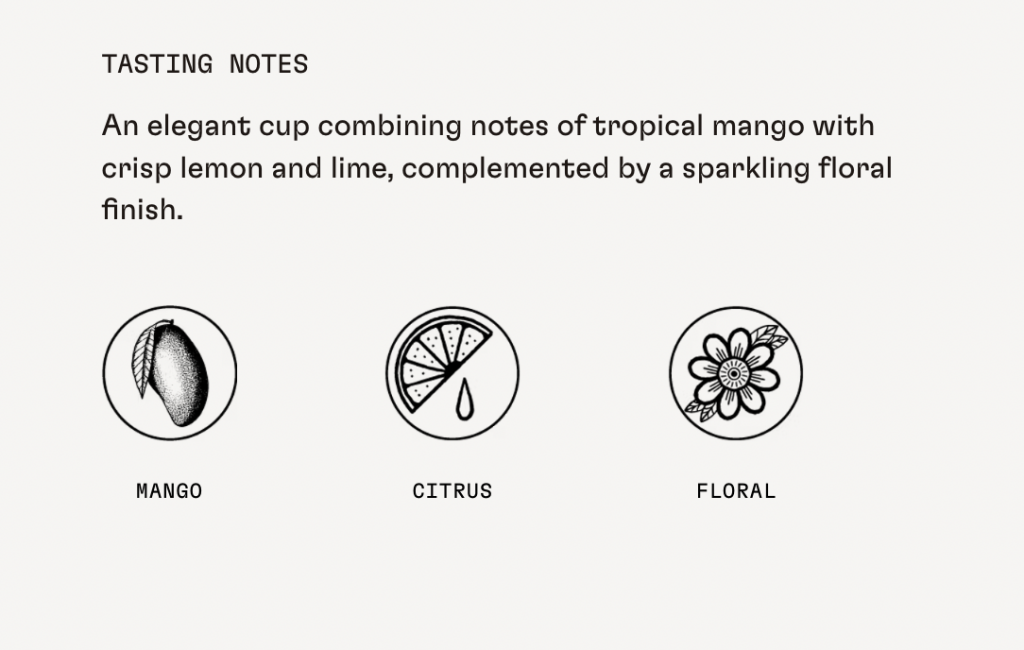

And if you’re anything like I was… your first thought is, “tropical mango?! My coffee just tastes like… coffee.”
Reading coffee tasting notes is a skill. And one people pay a lot of money (or time…) to learn. So the idea of this article is to fast-track as much of the knowledge you need to understand how to decipher these tasting notes for yourself.
How to read coffee tasting notes
The first thing to understand about tasting notes is they are just notes. If you squeeze a slice of lemon into your coffee, it won’t have notes of lemon. It’s just got lemon in it.
The notes I’m about to describe are subtle, but powerful. Actually, coffee is an extremely flavorful drink. Studies have shown it to have more flavenoids than even wine, believe it or not.
The 3 types of coffee tasting note

Type #1: Analogical
This type of notes is comparing the flavor to things like fruit or chocolate of flowers. Examples might be jasmine, blueberries, lemon, dark chocolate, green apple, black tea or so on. These are considered positive tastes and are usually described on the packaging of good quality coffee beans.
Type #2: Negative flavors (bitterness, aciditiy)
This type of note is describing undesirable tastes in the coffee. Often it’s a result of a poor brew, but can also be because of poorly roasted or kept coffee beans, too. Common negative terms for coffee are sour, acidic, bitter, grassy, vegetal, salty, acrid or astringent.
Note that these flavors aren’t always bad. A light acidity might be pleasant and can be described as bright and citrusy.
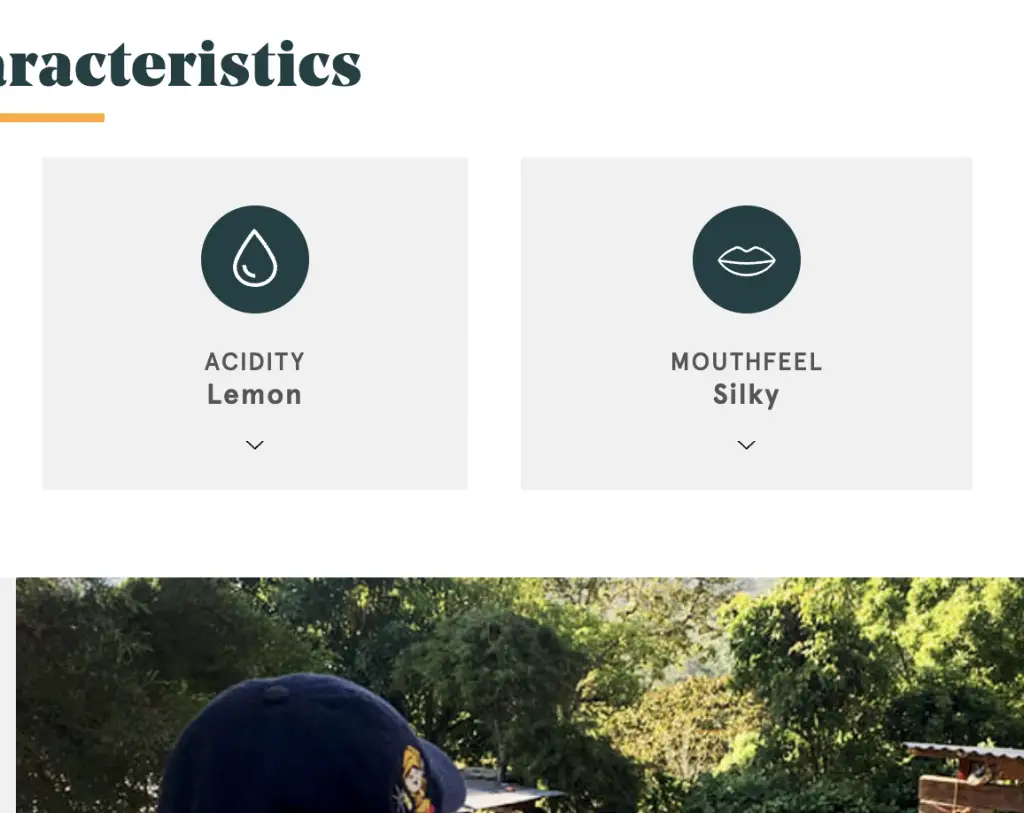
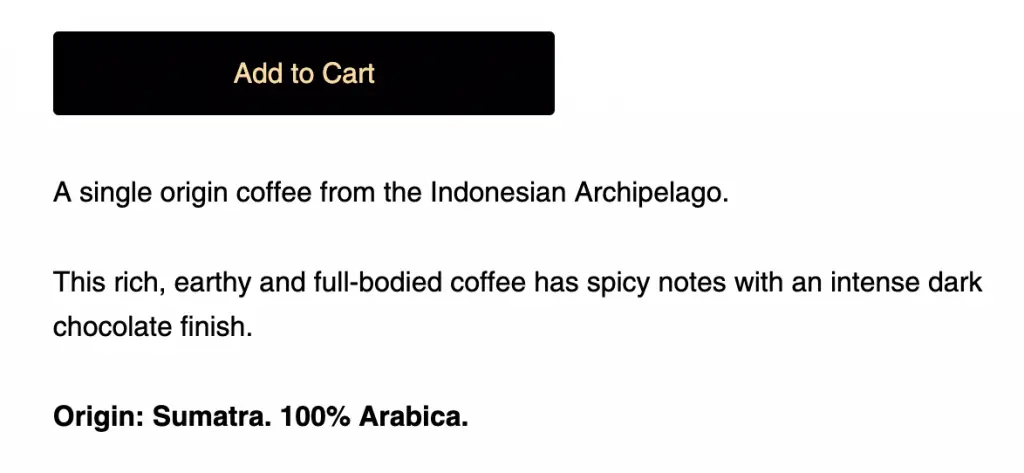
Type #3: Mouthfeel
The mouthfeel of a coffee is describing its texture. This can also be the cause of the brewing process, as different brew methods result in different texture. But also is often due to the coffee beans or the roast.
Common words to describe the mouthfeel include full-bodied, thin, watery, weak, smooth, creamy, velvety or chewy. These are also tastes that can be considered negative or positive.
It’s worth remembering too that mouthfeel exists on a kind of spectrum, one that goes from full and thick to thin and weak.
Tips to improve your coffee tasting
Tip #1: Pay attention when you drink your coffee
The most important tip in this list is to start paying attention when you drink coffee. Sip it slowly. Concentrate on the taste. Try to pick out tiny details about the coffee.
Honestly, you’ll make so much progress — and feel a lot more at peace! — by just taking a couple of minutes out of your morning to enjoy the wonderful drink in front of you rather than scanning through emails from people you don’t care about.
Tip #2: Buy fresh roasted coffee beans
To taste the amazing flavors in coffee, you need to buy and drink fresh roasted coffee beans. This article means nothing if you’re buying stale rubbish from the grocery story. As a rule of thumb, you should be aiming to brew coffee beans within 15-30 days after they’ve been roasted.
Tip #3: Read the tasting notes while you drink
When you’re sitting down with the latte you made from your Costa Rican light roast, read the tasting notes on the side of the bag. Notes of grapefruit? Have a sip, see if you can taste it. A heavy mouthfeel? Taste your coffee and see if you agree or not.
Tip #4: Drink your coffee black
You will taste the notes of the coffee so much more by drinking it black. When you add milk, cream or sugar you are masking the beautiful flavors of the coffee. Don’t know where to start? Here’s my guide on drinking coffee black.
Every single flavor and taste in coffee
Let’s look at a few of the efforts to catalogue all possible coffee tasting notes. There’s a lot here, by the way. And there are designed for proffessional cuppers… So don’t get too disheartened if you can’t taste the “papaya” and “hibiscus” in your coffee.
We’ll start with the SCAA’s coffee flavor wheel. This was made in 1995 and updated in 2016 and has been the industry standard since then. Here’s a great interactive link for you to check out. You can click on the tastes and stuff.
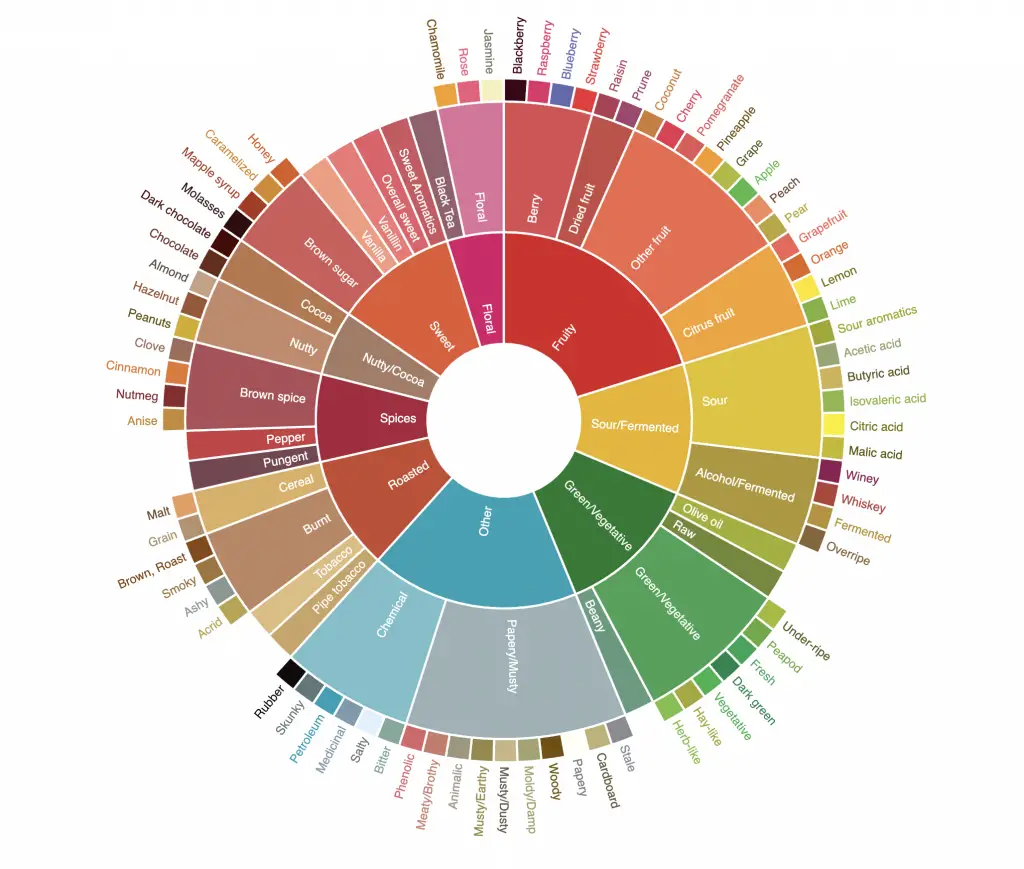
Here’s another one. A gorgeous little design from Counter Culture that shows a range of tasting notes along with small tables for Body and Intensifiers. Great stuff.
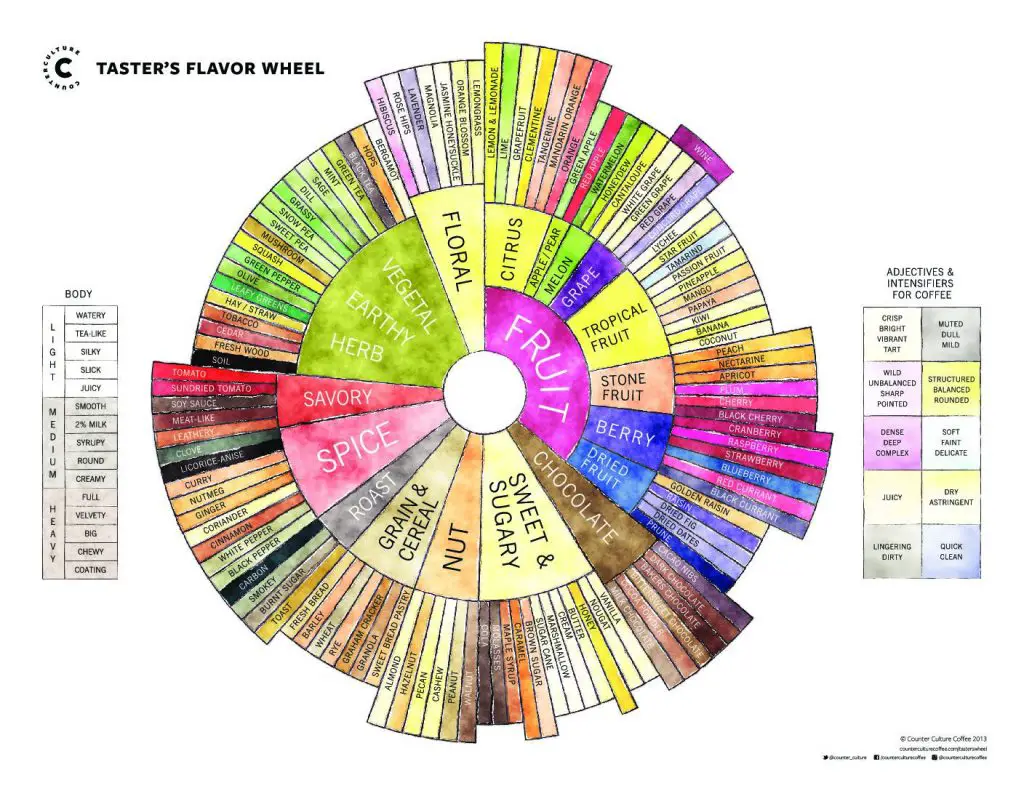
Example of reading coffee tasting notes
Here’s are the tasting notes for a coffee I picked up recently.
MILD ACIDITY AND SMOOTH TO THE PALATE, PERFECTLY BALANCED WITH HINTS OF CINNAMON AND CITRUS FRUIT
Now here’s what I think. Disclaimer: I am no expert.
The acidity is present and probably a little more noticeable than I’d like. The taste is sweet, almost juicy, with a soft mouthfeel. The citrus notes are definitely there too. Actually, it’s a very flavorful coffee and one where the flavor is overpowering to the point where I would not describe it as smooth.
As you can see, I’m not perfectly in agreement with the notes. Also, I didn’t think this was a particularly great coffee. But hopefully you can see how you go about reading coffee tasting notes.
Conclusion
I really hope this article inspires you to focus on your coffee more. It’s such a great skill. And you’ll find training yourself to recognize and appreciate different flavors will carry over to so many other things. Wine, craft beer, whiskey, gourmet food…
(Also, no one respects the person who doesn’t know the difference between cinnamon and coriander!)
And if you’re really looking to up your coffee game? Your two places to start are with fresh roast coffee (here’s why) and investing in a quality coffee grinder (check out my reviews here). Those are the two quickest tips to start brewing coffee as good as coffee shops.


5 Comments
Thank you!
I loved it!
You article I mean 😅 I spend my morning going from an article to another trying to figure out how can I improve my note tasting and how can I distinguish between all that varieties, and finally I read your article it was really helpful thank you so much 💕
Thanks!
What about “resting” of coffee beans? Do I need to wait 2 weeks or certain days before brew it?
Resting happens right after the beans have been roasted. The roaster should take care of it. Once you get your hands on the coffee beans, they should be rested already.